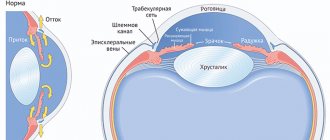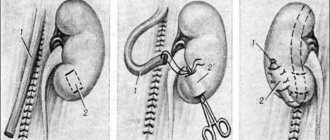According to monitoring data, in 2021, 34,662 patients received palliative care in Moscow, of which 14,358 received inpatient care. Minister, Head of the Department of Health Alexey Khripun spoke about this at a meeting of the Presidium of the Moscow Government.
According to various estimates, every year in the capital from 56 thousand to 92 thousand people need palliative care. It is provided to patients with incurable progressive diseases. A seriously ill person has the right to spend the last days of his life without pain and fear.
Where to get help
In 2021, according to monitoring data, adult patients could go to 66 palliative care rooms. They work in 47 medical organizations. In addition, the city has ten outreach palliative care services for adults and three outreach services for children, including the non-profit children's hospice service Lighthouse House. Nine of them (to provide assistance to adult patients and their families) were created on the basis of the Moscow Multidisciplinary Palliative Care Center, established in 2015. Two years later, in 2017, the First Moscow Hospice named after V.V. was added to it. Millionshchikova and its seven branches. The director of the center is Anna (Nyuta) Federmesser, founder of the Vera hospice charity foundation.
In inpatient settings, palliative care for adults is provided in 11 institutions, including the Palliative Care Center with hospice branches (440 beds), departments operating in multidisciplinary city clinical hospitals (240 beds), as well as in psychiatric clinical hospital No. 1 (360 beds). places).
Goals and objectives of palliative care
• relieve pain and other symptoms that cause suffering and discomfort; • develop an attitude towards dying as a natural phase of the life cycle; • provide psychological and spiritual assistance to patients; • ensure a maximally active lifestyle until death; • support the patient's relatives and friends during the period of illness, and immediately after bereavement; • use a comprehensive approach to meet the needs of patients and their relatives, including, if necessary, in the immediate aftermath of loss. • improve the quality of life in general, which can positively affect the course of the disease; • conduct research to find more effective methods for solving the above problems.
Respiratory center
In February last year, a 15-bed respiratory support department was opened at the Palliative Care Center. As of the end of 2021, 315 people had already received medical care, 244 of them at home, after their loved ones were trained at the center.
Specialists are preparing patients for transfer from the intensive care unit to home observation. Additionally, the center’s staff provide psychological support, train relatives in caring for the sick, and select respiratory equipment (which supports respiratory functions).
At the end of last year, according to the coordination center registry, more than 900 people with diagnoses of lung cancer, chronic obstructive pulmonary disease, and amyotrophic lateral sclerosis potentially needed respiratory support. In 2018, all patients who, according to the decision of the medical commission, required respiratory support (244 people) received the necessary medical equipment. Equipment for artificial lung ventilation and non-invasive ventilation was provided to patients under a free use agreement.
Anesthesiologists-resuscitators and other center staff monitor the operation of the equipment and also provide respiratory support at home around the clock.
Organization of palliative care
Palliative care in an outpatient setting is provided:
- in palliative care rooms;
- visiting visiting palliative care services established in medical organizations (including hospices).
Palliative care in inpatient settings is provided:
- in palliative care departments;
- in nursing departments of medical organizations;
- in hospices;
- in nursing homes (hospitals).
Palliative care rooms, visiting palliative care services, palliative care departments, nursing departments of medical organizations, hospices, nursing homes (hospitals) must be organized in accordance with the Procedure.
Referral of patients with malignant neoplasms to medical organizations providing palliative medical care in the presence of a histologically verified diagnosis is provided by:
- in outpatient settings: oncologists.
- palliative care doctors of palliative care offices;
In the absence of a histologically verified diagnosis, referral of patients with malignant neoplasms to medical organizations providing palliative care is carried out by decision of the medical commission of the medical organization in which the patient is observed and treated.
Coordination center
On April 1 last year, the coordination center for palliative care completed its work in test mode. Patients and their loved ones can receive advice around the clock by phone, email, as well as through social networks and instant messengers.
During the year, the coordination center received 21,619 calls and more than 17 thousand direct requests were registered for registration with the Palliative Care Center.
The coordination center has become a place where data is collected on all patients - residents of Moscow who need palliative care. Thus, it is the prototype of the palliative patient registration system for all other regions of Russia.
To get a consultation and register with the Palliative Care Center, you need to:
— call the coordination center by phone or write by email;
— bring documents to the center or any hospice, you can also send them by email. After this, a doctor will visit the patient to clarify the condition and make a decision on the required volume and form of assistance.
Learn more about how to get help.
Coursework versus permanent
Classes with Mikhail
- What other problems do families of palliative patients face?
– Moscow is a huge city, and there are few outreach services for palliative patients. It is very important that the support is constant. Until recently, we had to work in courses.
This is 15-20 sessions maximum 2-3 times a year. What's in between? Long breaks and all hope is only on the skills of the parents. At most we could give a couple of consultations during this time. But it is difficult for parents to cope without control and support.
At first they lit up and tried to follow the recommendations. But, left alone, under the burden of everyday worries, they lost their rhythm, stopped doing exercises with the child, and then had to start a lot all over again.
In this case, I repeat, the parents are not to blame. Regular support and supervision are needed. Perhaps the development of a network so that specialists like me become closer to patients, including geographically.
Thanks to grants from the Moscow Public Relations Committee and the Absolute Help Foundation, we were able to place our clients under constant supervision. In addition, exercise therapy instructors can now work together with a neurologist.
To progress and maintain acquired skills, exercise therapy classes must be constant.
My parents and I are constantly in touch. If there are any difficulties, you can shoot and send me a video, I will promptly comment. This gives people a different level of trust; they become full-fledged participants in teamwork.
Work without family support is ineffective. It is important for me not so much to burden my mother with new works for her, but to understand what she can do and where the limit of her capabilities is. And at the same time offer to act in a new way, to show that it is easier and even more joyful.
Take feeding. Often the child is fed while held in his arms, although he is already 3-4 years old, he is large and heavy. One feeding sometimes takes a whole hour, mom’s back and arms hurt. But it’s impossible to just tell mom: “Okay, let’s quickly put him in the stroller!” We need to communicate, explain why this is necessary and what we are striving for. At the same time, understand what the difficulties are. Establish a routine together. For example, first we put him in a chair, which also needs to be chosen correctly, only for one or two feedings, and gradually we get used to regularity.
We have a ward Madina. She is very small and can only lie down on her own. We managed to select technical rehabilitation means for her, and now she can sit. And the sitting position makes it possible to feed the baby more physiologically. But a new difficulty arose: it turned out that Madina’s lips did not close, and this interfered with swallowing. We selected special exercises and taught my mother how to exercise with Madina. And everything started to work out!
Quality control
In 2021, a quality control department was created on the basis of the coordination center. Its main task is to objectively and systematically assess the level of medical care, communication with patients, and prevent operational failures. In 2021, more than 650 surveys were conducted as part of quality control of palliative care. Department employees were also involved as experts to conduct a general medical audit of palliative departments in Moscow.
Unified Commission on Hospitalization
The Palliative Care Center has a single hospitalization commission. In real time, employees of the center and branches (hospice) discuss the need for hospitalization or discharge of a particular patient. If a decision is made to hospitalize a patient, they look to see which department or hospice has free beds so that he does not have to wait. This also ensures continuous management of patients who are registered at the center and receive care at home or in a hospital.
Since September 2021, meetings of the hospitalization commission began to be held online, which ensures the participation of all branches.
Palliative – from the word “cloak”
– Palliative medicine is associated with helping the dying. If it does not lead to recovery, then what is its point?
– Yes, it really does not lead to recovery, otherwise it would not be called palliative (from the Latin pallium - “cloak, blanket”; a temporary solution that covers the problem like a cloak. - Ed.).
We care for terminally ill patients, including those with congenital disorders. If the symptoms of the disease are alleviated, support and care are provided, some patients (alas, not all) can live an active, fulfilling life.
The time during which a palliative patient requires medical support can be short or very long. We had a girl with terminal cancer who only needed our help for a few months.
There are children with severe cerebral palsy (CP), whom we have been accompanying almost since the founding of our service, for almost 10 years.
But even when a child dies, we do not abandon the family; if the parents are ready to accept psychological help, then psychologists work with them for another year as part of a grief program.
A common problem for clients is limited mobility.
– Why did you come to work in the palliative care service?
– I worked as a manager, although I had a nurse’s education. One day, a colleague came to visit me with her daughter, who had serious health problems. The girl did not walk and hardly spoke. And I felt that I would like to work with such children, I completed courses for massage therapists and came to the Marfo-Mariinsky Convent. At first she was a nurse in the Children's Mobile Palliative Service, later she completed training and began working as an exercise therapy instructor.
– How exactly can a physical therapy specialist help palliative patients?
– One of the common problems of our clients is limited mobility. Due to immobility, children develop complex scoliosis and deformed arms and legs. This is both painful and fraught with additional complications.
My task is to try to avoid such a scenario, to help maintain mobility. Here you have to work yourself and teach the whole family how to do gymnastics, how to change positions, how to move the child.
Children with SMA (spinal muscular atrophy), for example, our Vlad, also need my help. With this disease, muscles atrophy: first, a person ceases to control his legs, arms, loses the ability to sit, and then eat and breathe. This process cannot be stopped, but you can “delay it” a little - thanks to constant exercise, the muscles will not weaken so quickly.
But for a child, another year of opportunity to work with his hands, hold a pen, or hold a phone is very important!
– Does the age of the child affect the success of classes?
– The smaller the child, the less deformation. Children under two years old are one thing; they are mobile and active. And it’s completely different for teenagers of 14–15 years old. Usually this is a fairly neglected option.
Patient transportation
Patients identified as requiring palliative care can expect free transportation to and from their care location. In 2021, 6,143 trips were made. This makes the provision of palliative care accessible to all groups of patients, saving both personal funds of citizens and the time of ambulance crews. Previously, they were forced to go to patients who needed palliative care and were often hospitalized in non-core hospitals.
Volunteer support
Last year, more than 2,500 volunteers took part in the work of the Palliative Care Center. To make their work more effective, each hospice and center has permanent coordinators. Together they support the staff in all non-medical matters: help with housework, create home comfort, organize events, support terminally ill patients
Education and development
A staff training and development department has been created at the Palliative Care Center. Trainings, master classes by leading experts, and internships are held here. The department cooperates with specialists from other organizations and regions.
The purpose of his work is to increase the level of knowledge and practical skills in the field of palliative care. Doctors must know how to alleviate the symptoms of diseases, care for, and communicate with a seriously ill person and his family.
One of the projects of the training department was the “Caring Workshop,” or a school for caring for seriously ill patients. The project was launched in 2018 with funds from philanthropists and a presidential grant.
Palliative care methods
When treatment is ineffective, it is very important to stabilize the psycho-emotional state of the patient and his family.
For pain relief, analgesics are prescribed in the form of injections or tablets; the treatment regimen and dosage are selected individually for each patient.
Many sick patients experience digestive disorders, in which case the doctor prescribes laxatives and selects a diet to optimize nutrition. Proper nutrition will prevent weight loss, nausea and vomiting, and will also improve your well-being and mood.
The newest method in palliative medicine is xenon therapy using non-toxic, harmless, inert gas xenon. The method relieves stress, anxiety, tension, insomnia and depression. Xenotherapy has immunostimulating, anti-inflammatory, anti-stress, antispasmodic, analgesic and cardioprotective effects.
Education and information support
Funds from philanthropists and a presidential grant support the operation of a hotline for terminally ill people. By phone: +7 you can get psychological help, as well as ask questions about caring for patients at home, pain relief, and protecting the rights of patients.
In addition, at the expense of charitable funds, with the participation of experts from the Center for Palliative Care and Hospices, information and educational materials (leaflets, memos, manuals) are published on various aspects of palliative care - care, pain relief, psychological support - for patients, relatives, and specialists.
Palliative care for children
In inpatient settings, palliative medical care for children is available at the Morozov Children's City Clinical Hospital (30 beds), the children's city clinical hospital named after N.F. Filatov (seven places), the First Moscow Children's Hospice ((former Scientific and Practical Center for Specialized Medical Care for Children named after V.F. Voino-Yasenetsky) 30 places). The latter will become part of the Palliative Care Center in 2019. This is necessary to create the first Moscow children's hospice, which will be part of the city healthcare system.
Outpatient palliative medical care is provided by specialists from mobile services who work at the First Moscow Children's Hospice (formerly the Scientific and Practical Center for Specialized Medical Care for Children named after V.F. Voino-Yasenetsky) and the Children's City Clinical Hospital named after N.F. Filatova. In 2021, specialists from these institutions made 3,056 visits to young patients. 329 children received palliative care at home.
Additionally, the “Mercy” help service operates to help children. In 2021, its nurses made more than 600 visits to provide various types of palliative care.
The largest amount of assistance to children at home is provided by the charitable children's hospice “House with a Lighthouse”. Now she simultaneously supports about 566 families with terminally ill children living in Moscow and the region. From 2013 to 2021, the children's hospice mobile service operated entirely at the expense of benefactors. In 2018, the work of the service was supported by the capital’s Government by providing personal subsidies. In 2021, the hospice service made more than 34 thousand visits throughout Moscow and the region.
In 2021, a hospital for a charitable children's hospice is due to open in Moscow. The idea of creating it in the capital appeared in 2010. And in 2013, the Moscow Government provided free rent of land and a building for the creation of a hospice hospital. Major repairs were made using donations from philanthropists.
Principles and types of palliative care for cancer patients
The essence of palliative care is to relieve symptoms that impair the patient’s quality of life. The principles of palliative care for cancer patients are as follows:
- respect for the patient's dignity and autonomy;
- agreement with the patient and his relatives on any changes;
- continuity of care;
- friendly communication and reliability of the information conveyed;
- multiprofessional approach;
- support of the patient's family members.
The main types of palliative care for cancer patients are:
- symptomatic therapy and pain relief;
- psychological support for cancer patients;
- social support.










